#it would cure all of my problems
Explore tagged Tumblr posts
Text

tfp soundwave my beloved…
it was silly and quick but the comfort of it made me a lil teary i stg i need to touch grass LMAO
#maybe i’m tired and a little stressed but this mfker’s hug would cure all my problems LMAO#corvy draws#maccadam#transformers#tfp#mecha#transformers prime#transformers fanart#tfp soundwave#soundwave#mecha art#yumeship#transformer x human#canon x self insert#self ship
158 notes
·
View notes
Text
Just saying:
"The calling" singing by Joey and "The Old Witch Sleep and Good Man Grace" singing by Madeleine would cure all my problems (even back problems)
#the amazing devil#joey batey#madeleine hyland#just their new song will cure all my problems#im missing them like mf#hear me out this version would be SO good
119 notes
·
View notes
Text


oh to be at the beach on a summer night in july having deep talks with matthew gray gubler
#and talk with him for hours#it would cure my depression#fix all my problems#matthew gray gubler#mgg#whoisspence
206 notes
·
View notes
Text

#fran x cc#fran fine#cc babcock#the nanny#im serious#that's how it works#i would be cured too#all my problems would be gone#nvm actualy i would die so#i just love them so much
304 notes
·
View notes
Text
i NEED jay to be in the trailer PLEEEASSEEEEE IM BEGGING YOU LEGO PLEASE PLEASE I WOULD SOB REAL TEARS OF JOY. EVEN IF ITS FOR .00005 SECONDS I NEED IT
#begging i need this in my life .#it would cure all my problems#kunsho#ninjago#lego ninjago#ninjago dragons rising#ninjago jay
119 notes
·
View notes
Text
The „conceptual episode“ in season 3 but it’s just one full hour of Aegon and Larys living their best life in Essos. I think I need that.

#hotd#house of the dragon#aegon ii targaryen#larys strong#team green#pro team green#one hour of their dynamic would cure all of my problems#or just give me an entire season#I need more aegon#pls
22 notes
·
View notes
Text
me with herongraystairs:
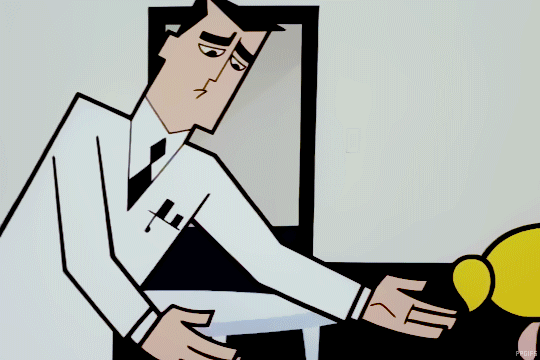
#the way a hug from any of them would cure all my life problems#like seriously#i just wanna hug them so bad :(#ik their reunion in twp will mess me up#will herondale#jem carstairs#tessa gray#herongraystairs#the infernal devices#tid#tsc
71 notes
·
View notes
Text
I don't think that framing "Marginalized™️ Atheism/Deconstruction" and "Cishet White Male Atheism/Deconstruction" as inherently ~separate and distinct~ is super effective (and disclaimer I'm specifically speaking about my experience with christianity, atheism, and ex christian atheists/deconstructors), but also... okay so I was raised in a cult, and cults are oppressive for all its members. Nobody gets out unscathed, everyone experiences the abuse tactics, everybody is a victim. But within the cult there is a hierarchy, and cishet white men are at the top. So while the cult is oppressive to everyone, and everyone is harmed in some way, it is also uniquely oppressive to queer folks, to BIPOC, to disabled folks, to women, etc etc. And the thing that happens to some of those cishet white men is they leave an oppressive cult, where they are considered the "default", and they go into the ~real world~, where they are also considered the "default", and even in atheist/deconstruction spaces, their bodies and experiences are often the leading voices.
The men that leave go from an oppressive patriarchal culture to a far less oppressive (to them) patriarchal society. The white people that leave go from an oppressive racist culture to a far less oppressive (to them) racist society. The people that leave go from an oppressive culture that does not value marginalized voices to a different, less oppressive culture that also does not value marginalized voices. And if you personally do not experience [xyz] oppression, it can be difficult to even realize there are things surrounding that you have to deconstruct unless you listen to the voices of the oppressed. But some cishet white men go from being considered the "default" in an oppressive culture, to being considered the "default" in a less oppressive culture (to them). Their experience of "overcoming systemic oppression" comes from leaving the church, and it can be really easy to fall into the trap that the church, specifically, is the sole oppressor and enemy of everyone.
Of course this doesn't happen in every single case and it's also not exclusive to cishet white men. But those blind spots are why I think it's important for everyone to listen to a variety of voices when they're deconstructing, especially if those voices are talking about oppression you wouldn't have experienced firsthand.
No, our deconstructions are not inherently different, but the experiences and circumstances prior to it often are. It's okay to acknowledge that and beneficial for everybody to listen to each other's experiences.
#ex cult#ex christian#deconstruction#also extremely not claiming that i was or even am currently perfect about this#it really wasn't something i considered until the last couple years and i started getting on deconstruction tiktok#but when i was first deconstructing almost all of the deconstruction content i was consuming was cishet white and male#(one person not being het)#and like tbf these people generally seemed like good people just trying to do their best. it's nothing against them#but i didn't realize how like... important listening to other voices would be#both for the camaraderie and for learning#like yes i was chronically ill while in the church w both mental and physical conditions and it was damaging to me#but i was also not visibly disabled#and i didn't really pick up on how the church treated and harmed people who are visibly disabled while i was in it#and it wasn't something i really considered until i saw someone who was visibly disabled talk about their experience#how they'd get harassed at church#how everyone wanted to lay hands and pray for a miracle#how they were treated as the problem when praying didn't cure them#how people thought it was caused by sin or demons or lack of faith or whatever else#yes there is some overlap in our experiences but some things just didn't even cross my mind before bc it wasn't my personal experience#anyway diversify the voices you listen to when you're deconstructing it's good for you!!!#mine
49 notes
·
View notes
Text
i need to be ethan hawke’s suspiciously young boyfriend right about now
#boy blogging#boy blogger#ethan hawke blog#ethan hawke#it would cure me#literally it would fix all my problems i’m being so deadass
11 notes
·
View notes
Text

shameless self-insert......... :))
i really want to hug and smooch that robot and give him all the love he deserves ♥
#fnaf daycare attendant#dca fandom#daycare attendant#fnaf security breach#fnaf sun#sundrop#my art#i think i need that hug more than he does tbh#one hug from that goofy silly jester would cure all my problems........
34 notes
·
View notes
Text
if they Tamlen solas' ass, that might just be IT for me
#weak! lazy!#o hhe's doomed! he's doomed! death flags all around!#GOD FOR ONCE I WOULD LIKE A GOOD FUCKIGN REDEMPTION ARC#ITS BEEN 16 YEARS SINCE ZUKO#do NOT message me about loghain i swear to GOD#i will be SO pissed if nothing the inquisitor/rook does matters wrt solas' fate#like if he dies no matter what#and the ''good option'' is your inquisitor is just?there? so he's not 'alone'?? bc they want a tear jerker#its like okay so alllll my choices in dai and trespasser didnt matter. again.#like i am just praying they use any of the cool shit available in the narrative#we canonically have time travel. we canonically have been able to the cure the blight. like#are u telling me. dorian pavus. mage who co-invented time travel#wouldn't be able to think of another way to remove the veil safely?#bullshit.#i just have this nagging feeling in my gut#that weekes thinks a 'hopeful romance ending' is akin to like. some stupid dr who shit#like i will also fucking throw my keyboard if its like. 2 solas'.#get out of there w that shit#like what if love changed everything? hmm? what then?#and i KNOW they said they're trying to give closure to all the various attitudes towards solas. problem?#i have never and will never trust a goddmn thing any bioware employee says.#tamlen was my first love so you see this is where the problem started
18 notes
·
View notes
Text
CAPTAIN QUINN 🔜🫡
#i fear the person i will become once they announce captain#quinn with the C would cure all of my problems#captain quinn incoming#shoutout to the canucks for knowing exactly what the people want#like their admin just gets it#vancouver canucks#quinn hughes#quinn hughes the man that you are
111 notes
·
View notes
Text
Hey I totally undesrtand if you stop following me now i just wanna declare my unspeakable desire to be crushed between wyll and karlach this would honestly fix my whole life
18 notes
·
View notes
Text
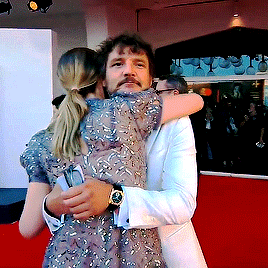
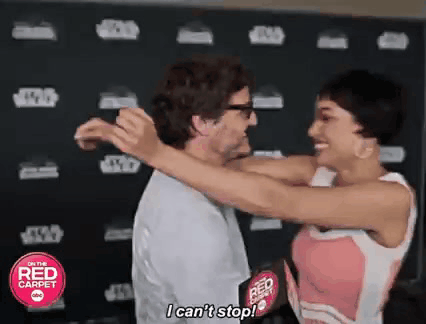
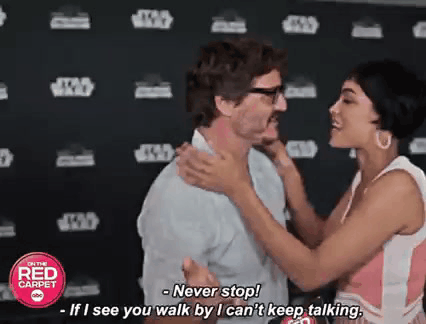

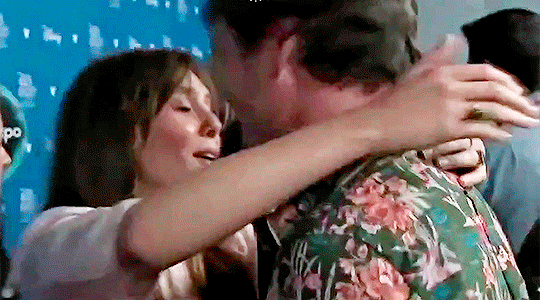
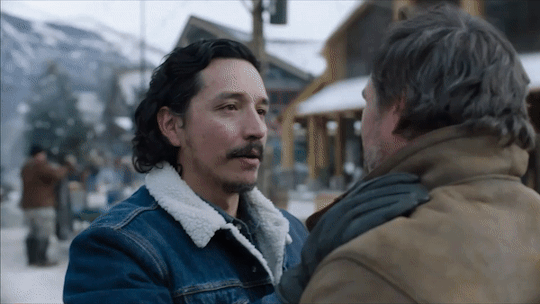
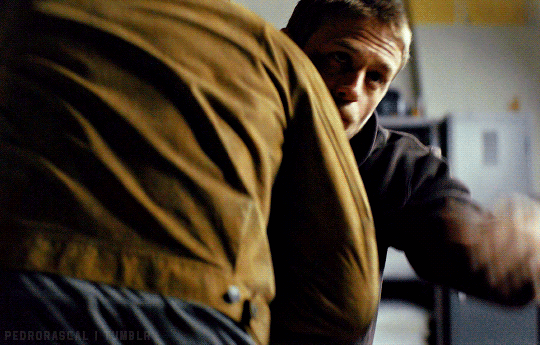
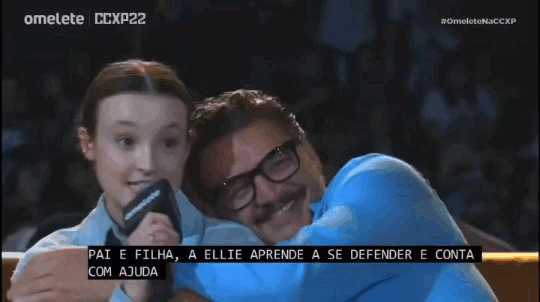
I just really want a hug from him.
#a Pedro hug is what I need#it would fix all my problems#it would cure my depression#look at him#my gosh#pedro pascal
50 notes
·
View notes
Text
anyone else up feeling like they’ll never have a place in this world
#i just need to 1. get over all my insecurities and fears and brave social interaction esp with people i already know#2. make more friends especially irl#3. probably talk to and get closer to more family because the only person i really have is my dad#4. not feel tired all the time#5. not be in pain all the time#6. somehow get my body back to functioning levels#7. stop being afraid of everything#8. learn to drive#9. somehow get a job despite everything#10. somehow pay off my debt and go back to college#11. figure out what i want to do with my life#12. this should probably be step 1. i need to start feeling alive again#13. not die probably#how it feels knowing that my depression would be so much more manageable if i wasn’t so lonely#my new therapist said my depression is moderately severe 😁 which is honestly not that bad#when i went in for my first round of therapy my anxiety was rated severe. but now it is moderate!#so maybe my new therapist will cure me#and by cure me i mean teach me how to cure myself#the problem is that it’s so hard to want to cure yourself when life doesn’t seem worth living anyways#like what am i even alive for#my ocs. media. chocolate cake. food in general. seeing animals. petting my cat#see there’s stuff to be alive for but i feel so disconnected from everything lately that like idk#it’s like it’s not really me who’s enjoying these things that i(TM) enjoy#i’m so happy for my friends and proud of them for being in college#but boy oh boy have i faltered severely without them#guy who needs to get out more but cannot get out alone and has no one to get out with anymore#i really took all those moments of waiting outside of high school to get picked up and talking for granted#it’s kinda humiliating to say that the best year of my life was my freshman year of high school#but it was. it really was. wistful sigh#i was so happy
5 notes
·
View notes
Text
A TREATISE ON WINGS, IN NON-WINGED CREATURES
IF a person were to have wings. the automatic problem with making them avian stylistically is that wings are homologous to human forelimbs. wings are forelimbs. ergo: why people get so mad about dragon designs that showcase four limbs AND wings, because the majority of the time they’re intended to be close to reptiles (tetrapod lineage). likewise, any sort of mammalian basis (bats) also fails*. there is an interesting potential to gain some characteristics that would indicate conversion of forelimbs into wing-like structures but would not be practical because i am setting this in a universe where we need. y’know. hands**. HOWEVER. in the interest of i need to create a functional justifiable mechanic to write (porn. i would love to lie but the odds are really good it's just pwp), i really like the idea of using an insect analog***.
first at bat to narrow down our options: direct or indirect flight. for the sake of limiting the amount of internal bodily anatomy this transformation would have to result in, i think direct flight (sheer muscular willpower to raise and lower wings) works best as a mechanic. in theory, (based on these human anatomy diagrams) the massive elevator and depressor muscles that insects with direct flight use can be loosely translated to a really well developed transversus thoracis (depressor of the rib cage) and potentially pectoralis/levator scapulae. it’s not an elegant method of flight but it does = flight. also, because this method of flight is so stupid and silly, i have fewer options to play with. i think it does fit in this context that of course it would be flight by brute force instead of finesse.
next: how are we getting these wings. my immediate thought goes to hox genes being activated**** and T2 segments. oh did you want smooth shoulders and vertebrae? too bad. extra limbs***** and in particular, ubx (a specific cluster) mutations are famous for resulting in flies with extra wings. ubx would be a good candidate for activation if we can find a similar cluster that is conserved in humans******. really, any gene cluster associated with the development of wings being activated here helps.
[hox genes interlude, tl;dr our body starts as “segments” that are programmed to become different tissues/areas/structures. hox genes = architects of body design at a broad scale, activate other genes for differentiation of radius, humerus, carpus, etc. therefore: major body change, such as adding an entire limb = i’m arguing hox genes involved. what we want to do is the same as those mutant bugs: mutate the T3 segment (vertebrae between shoulder blades in humans -> end of thorax in insects) to be similar to “T2” (site coding for insect wings) using hoxa&d 5/6/9-13::homC to tell it what to do, and you should get another limb. wings, if we fiddle with the genetics. which, given that hox genes are pretty much preserved, i'm sure we could find an ultrabithorax to turn on.]
so we’ve kind of got wings, in an embryonic sense, or at least the mechanism for them. how do we make this happen “spontaneously”? can we generate a series of events that will trigger gene activation and phenotypic change? i mean. yeah arguably. i think the argument becomes whether the activation of our imaginary gene occurs via phenotypic plasticity, local adaptation, or environmental epigenetics*******. in any case, the key fact is that the environment******** leads to an altered phenotype via gene expression and voilà: wings.
ok but girl WHAT are these wings made of??? oh i'm so glad you asked. per our insect friends and also mammals -> mesenchymal stem cells, which adult hox genes code for, and these "buds" can be shaped into wing-like structures according to highly debated insect development (see footnotes). which means: we can have bone. and muscle and cartilage and fat, if we have something to trigger that differentiation, which we just said we can. and what's from stopping our mesenchymal cells from differentiating into keratinocytes? literally nothing. they do it all the time. so... what are feathers made of? keratin. arranged particularly. and in the most enormous handwave i have done in this entire thing, all of the multiple genes i've said "yeah they probably exist and we can have them"********* allow for that keratin to be arranged in a way that makes feathers and that bone and muscle in a way that makes wings. really the only part that will take work is building up those elevator and depressor muscles, but with the growth of the wings it shouldn't be too bad.
and in the end we have circled RIGHT back around to the complete opposite point, which is what i have been arguing towards the whole time: bird wings are plausible if we consider a lot of things that are not birds, like bugs**********. happy wing-ficc’ing!!!
FOOTNOTES (unumbered because tumblr can’t superscript)
*for the sake of horny, i am ignoring this and adding some avian characteristics because a) that’s what people expect when you write wing fic, b) uropygial gland is a major plot point, and c) bird erogenous zones enough said.
**a baseline assumption here when prompted with “wing fic” to me is that there should be wings in addition to arms, because most people do not feel morally conflicted about inaccurately portraying the biology of wings because: THAT’S NOT THE POINT or it is accepted within their universe to have these rules (angels, etc). alas. you’re in the torture realm with me and i’m inventing the rules. if this were purely for myself i think it would be much easier and plausible to myself oops! keratin the epidermis and replace hair with feathers or to “evolve” arms into wings or a multitude of alternative biologies (the breakdown about wing possibilities would be another post). but again: we need hands to play hockey and we want full on wings, so here we are.
***insect wings are not limbs!! problem solved!! this also has nothing to do with my love for invertebrates and secretly something to do with botany and also some really big imaginative stretches. i am making all of this up, except for the parts where i have citations.
****i KNOW they teach you hox genes are active only in skeletal development in embryo. see rux & wellik 2017 for studies on expression in adults. if they can aid in expression of mesenchymal stem cells and bone repair i see lots of possibility for new bone growth but we’ll get there.
*****they did a study where they basically did this. insect hox segmentation has antennapedia clusters that control the placement of antennas vs mandibles vs limbs; alter these genes and you get a bug that is baller at heading soccer balls.
******this is a brief aside to say that there are hella arguments about the evo-devo of insect wings despite agreements that it is monophyletic. for the sake of my desired result (fully formed outgrowths of bony wings) i am favoring the idea of the pleural/exite hypothesis or dual origin. don’t ask me to get more specific about the genes i think we’re already pushing it if i co-opt and terribly vague the idea of exites/somites to explain the process of wing growth via “budding”.
*******we really don't need to worry about this, which is why it's going in a footnote that this is kind of a chicken and egg situation where we're not quite sure why phenotype can change in response to the environment with no genome change but people think that environmental epigenetics (influence of chemicals, etc on genome that alter expression/how well genes can be transcribed) may be how phenotypes change. not the same thing; EE -> PP, perhaps, but also perhaps there's some other mechanism.
+ for another side note, i love epigenetics because they're dope as hell and epigenetics are heritable, which could be fun. local adaptation is just there because it is a possibility--given the insular nature of hockey we could see this (founder effect? drift? stress?), although because it's a genetic shift it requires much more Lineage and Generations to things. no single generations here we're not bacteria!!! again, with the wing alternatives paper i am not writing, it would be interesting to see pathways of evolution in different populations and who could be a local adaptation vs phenotypic plasticity.
********normally this would be literally anything like diet or toxins or exercise etc etc etc. behavioral epigenetics is also really cool and i linked a paper (creighton et al 2020). anyway for purposes of the alleged wing fic i have managed to write ??? about without actually writing, we have an environmental trigger in the form of hockey but i am debating a horny trigger. for funsies. like horny weird puberty :) which if i'd gone THAT route--*comedy hook yanked off the stage*.
*********listen, evolution loves to say heyyyy what if i saved that for laterrrr and simply does not get rid of like anything. she just turns it off. don't make me pull out the phylogenetic tree We Were All Fish once and your genes remember. Shh differentiates scales/claws/hair. we could have feathers if we wanted.
**********also don't look at how much of this is secretly plants and not even insects. but do look at all the citations if you want. if you read all that i love you thanks for coming to my ted talk <3
REFERENCES (kind of in order. no direct citations because we treat footnotes like a joke #boochicago and also i can't be bothered to do apa or mla in text we are clowning on every format. you can maybe have afs if you really want it)
Rux, D. R., & Wellik, D. M. (2017). Hox genes in the adult skeleton: Novel functions beyond embryonic development. Developmental Dynamics, 246(4), 310–317. https://doi.org/10.1002/dvdy.24482
Tomoyasu, Y. (2017). Ultrabithorax and the evolution of insect forewing/hindwing differentiation. Current Opinion in Insect Science, 19, 8–15. https://doi.org/10.1016/j.cois.2016.10.007
Holland, P. W., Booth, H. A., & Bruford, E. A. (2007). Classification and nomenclature of all human homeobox genes. BMC Biology, 5(1). https://doi.org/10.1186/1741-7007-5-47
Clark-Hachtel, C. M., & Tomoyasu, Y. (2016). Exploring the origin of Insect Wings from an Evo-Devo perspective. Current Opinion in Insect Science, 13, 77–85. https://doi.org/10.1016/j.cois.2015.12.005
Frischer, L. E., Hagen, F. S., & Garber, R. L. (1986). An inversion that disrupts the antennapedia gene causes abnormal structure and localization of RNAS. Cell, 47(6), 1017–1023. https://doi.org/10.1016/0092-8674(86)90816-0
Nelson, C. E., Morgan, B. A., Burke, A. C., Laufer, E., DiMambro, E., Murtaugh, L. C., Gonzales, E., Tessarollo, L., Parada, L. F., & Tabin, C. (1996). Analysis of Hox gene expression in the chick limb bud. Development, 122(5), 1449–1466. https://doi.org/10.1242/dev.122.5.1449
Zhang, B., He, P., Lawrence, J. E., Wang, S., Tuck, E., Williams, B. A., Roberts, K., Kleshchevnikov, V., Mamanova, L., Bolt, L., Polanski, K., Li, T., Elmentaite, R., Fasouli, E. S., Prete, M., He, X., Yayon, N., Fu, Y., Yang, H., … Teichmann, S. A. (2023). A human embryonic limb cell atlas resolved in space and time. Nature, 635(8039), 668–678. https://doi.org/10.1038/s41586-023-06806-x
Romero-Mujalli, D., Fuchs, L. I., Haase, M., Hildebrandt, J.-P., Weissing, F. J., & Revilla, T. A. (2024). Emergence of phenotypic plasticity through epigenetic mechanisms. Evolution Letters, 8(4), 561–574. https://doi.org/10.1093/evlett/qrae012
Gao, S., Mo, L., Zhang, L., Zhang, J., Wu, J., Wang, J., Zhao, N., & Gao, Y. (2018). Phenotypic plasticity vs. local adaptation in quantitative traits differences of Stipa grandis in semi-arid steppe, China. Scientific Reports, 8(1). https://doi.org/10.1038/s41598-018-21557-w
Dar, F. A., Mushtaq, N. U., Saleem, S., Rehman, R. U., Dar, T. U., & Hakeem, K. R. (2022). Role of epigenetics in modulating phenotypic plasticity against abiotic stresses in plants. International Journal of Genomics, 2022, 1–13. https://doi.org/10.1155/2022/1092894
Duncan, E. J., Gluckman, P. D., & Dearden, P. K. (2014). Epigenetics, plasticity, and evolution: How do we link epigenetic change to phenotype? Journal of Experimental Zoology Part B: Molecular and Developmental Evolution, 322(4), 208–220. https://doi.org/10.1002/jez.b.22571
Kelly, S. A., Panhuis, T. M., & Stoehr, A. M. (2012). Phenotypic plasticity: Molecular mechanisms and adaptive significance. Comprehensive Physiology, 1417–1439. https://doi.org/10.1002/cphy.c110008
Eckhart, L., Valle, L. D., Jaeger, K., Ballaun, C., Szabo, S., Nardi, A., Buchberger, M., Hermann, M., Alibardi, L., & Tschachler, E. (2008). Identification of reptilian genes encoding hair keratin-like proteins suggests a new scenario for the evolutionary origin of hair. Proceedings of the National Academy of Sciences, 105(47), 18419–18423. https://doi.org/10.1073/pnas.0805154105
Liu, Y., Edgecombe, G. D., Schmidt, M., Bond, A. D., Melzer, R. R., Zhai, D., Mai, H., Zhang, M., & Hou, X. (2021). Exites in Cambrian arthropods and homology of arthropod limb branches. Nature Communications, 12(1). https://doi.org/10.1038/s41467-021-24918-8
Creighton, S. D., Stefanelli, G., Reda, A., & Zovkic, I. B. (2020). Epigenetic mechanisms of learning and memory: Implications for aging. International Journal of Molecular Sciences, 21(18), 6918. https://doi.org/10.3390/ijms21186918
#WORLD’S BIGGEST DISCLAIMER I AM NOT AN ENTOMOLOGIST!!! sorry if you are i did my best!!!!!!#i am ALSO not a geneticist. or like. an ornithologist. i do however have a BS degree#(legitimate) (also a joke that this should be taken with a grain of salt)#liv in the replies#this may become privated due to: who is reading all that and linked when i have to add the a/n of I KNOW BUT to appease my brain#and now you are asking me liv why did you not simply talk about abscission or axolotl limb regrowth or—LISTEN. limb regrowth =/= new limb.#this is already at a length that is unreasonable but i am hoping this cures the nonsense in my brain that was like#YOU CAN’T WRITE LENO GETTING DICKED DOWN BY PLD UNLESS YOU HAVE THE STIPULATIONS OF HOW HE ACQUIRED WINGS#and i realize that the answer that makes the most sense and that i would be pleased to read in someone else’s fic is simply. magic.#but alas. what do you get a degree for if not to write highly questionable discussions of how you could get wings on a tetrapod#to which my answer is bro look at bugs those aren’t limbs. but then make them limbs.#also they’re not tetrapods.#sorry?#this is in the vein of one day i will finally decode that note about age regression fic premise from t. dohrnii & medusae vs polyp forms#also like. all of the time i am writing this the you i am arguing with is myself. everyone else is fine & beloved EYE am the problem
4 notes
·
View notes